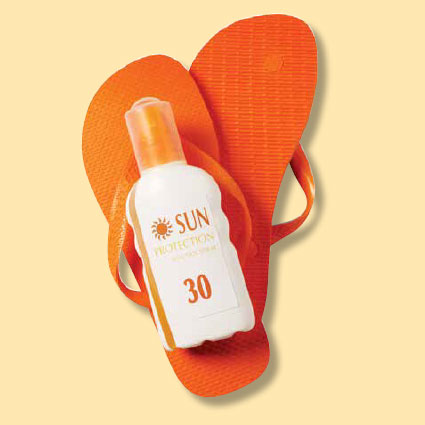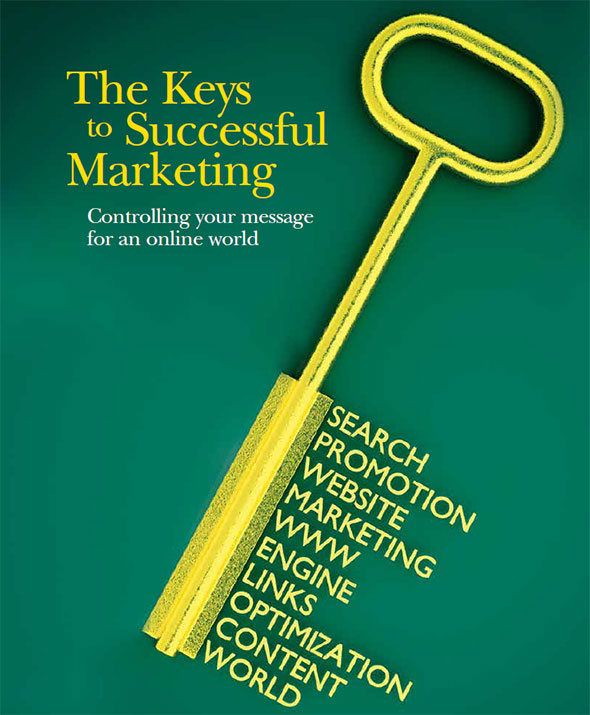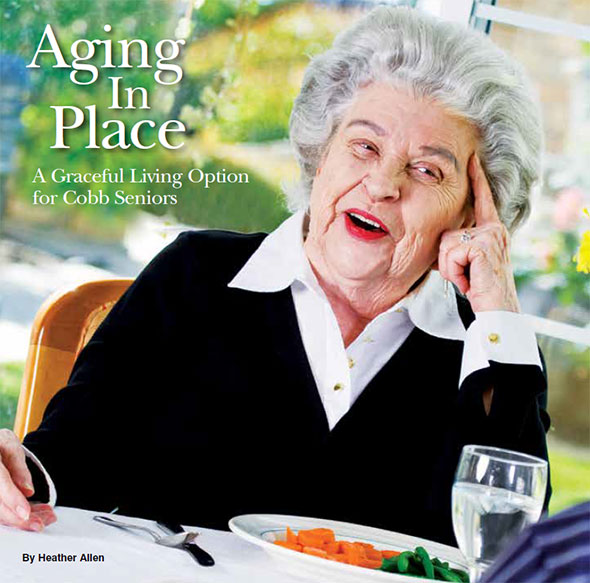Cobb County is making strides in providing opportunities for its population of active seniors to age in place without compromising a high standard of living. A variety of local senior living communities offers a range of options from independent living all the way to hospice care. Over the past few years, the notion of aging in place, where residents can move to different sections of the same facility as their health needs change, has grown in popularity.
In addition to eliminating the hassle and stress of moving, aging in place gives seniors and their families peace of mind in knowing that as health concerns arise, a trained and professional staff can handle them accordingly. Residents choosing to live in these facilities can be confident that they won’t have to sacrifice quality of life, regardless of their age or health status.
Continuing Care
Presbyterian Village in Austell has raised the bar on the concept of aging in place. As a continuing care retirement community, it offers various levels of health support in a spacious, updated facility.
The property boasts 35 cottages, 20 duplex-style cluster homes and 48 apartments all suited for independent living. For residents in need of more hands-on assistance, the property also has 24 assisted living apartments and 48 private suites for memory care. The nursing home building provides 107 beds for both short-term and long-term aid for residents in need of more advanced nursing care. Health related services include an on-site pharmacy, dietician and physical therapist.
This state-of-the-art community has plenty of options for care with an atmosphere resembling a country club instead of a hospital. Nestled on 60 acres of wooded land, the grounds have plenty of walking trails alongside a peaceful lake and gazebo perfect for socializing or bird watching.
Presbyterian Village also offers a variety of activities to ensure residents remain entertained. Monthly calendars suited for each level of care allow residents to pick and choose which events and activities best suit their interests, including square dancing, game nights and shopping excursions. A wellness center, complete with heated indoor pool and gym, offers T’ai Chi, yoga and dance classes.
In addition to active and comfortable living, one of the most important considerations for prospective residents is the ease with which they can transition from one level of care to another. Presbyterian Village has a resident evaluation team in place to address these issues during weekly meetings. “This team comes together from each level of care to discuss any concerns and keep updated on resident needs,” says Michelle Morris, marketing director at Presbyterian Village. “Communication is key, and our residents have top priority when it comes to meeting their needs.”
Concerns addressed in these meetings can be met by setting up additional services or accommodations in the resident’s current living space, or recommendations can be made to move him or her to a higher level of care. If a move is necessary, staff works closely with the resident and his or her family to ensure a successful transition. “Our No. 1 goal is making a solid health care plan,” Morris says. “Residents have peace of mind knowing their needs will be met. Presbyterian Village really can be a home for a lifetime.”
The Sterling Way
Conveniently located in the heart of East Cobb, Sterling Estates opened in August 2012 and is serving seniors with a high standard for independent and assisted living.
The community is settled on 10 acres of landscaped ground surrounded by six duplex cottage homes for independent living. Each cottage contains two apartments for residents to enjoy a worry-free lifestyle all on one level. These cottages resemble the finest custom-built homes in Marietta with the added bonus of maintenance-free living.
The main building has 90 suites in which residents can customize the level of care best suited for their needs. These suites offer all the comforts of home with the choice of nine floor plans, ranging in size from studio to two bedroom.
“We do not separate residents based on their physical needs,” says Sharon Egitton, assistant executive director at Sterling Estates. “Residents receiving care live right alongside residents who live independently. Therefore, there is no stigma attached to needing more care.”
When residents reach a point where they need more care from staff, they remain in their original apartment, and the care is brought to them in the privacy of their own home. “This way, the resident only moves once, and their care situation remains their personal business,” Egitton says. “This is a wonderful feature for couples as well, as they’re able to stay together regardless of their different health needs.”
In addition to spacious living, Sterling Estates offers a variety of amenities perfect for all activity levels. A hair salon, library and outdoor garden provide comfort and convenience, while the 5,000-square-foot wellness center is a bustling hub of activities. Seniors can do aquatic therapy in the indoor saltwater pool or attend a group chair exercise class. An on-site wellness director also works with residents to optimize their physical therapy through flexibility, balance and strength regimens. Seniors, regardless of which section of the community they reside in, can enjoy fresh dining options with restaurant-like service in the causal café or community dining room.
A licensed registered nurse and certified nursing assistants are available around the clock for residents in need of additional health care. “Residents can be as independent as they want to be and if they need more help, it can be brought to their main residence,” says Marshall Gill, executive director of Sterling Estates. “Our community truly allows you to age in place by keeping residents more active and independent in a comfortable setting.”
Life Well-Lived
WellStar has been a top health care provider in Cobb County for more than 50 years, and this summer, WellStar’s Atherton Place celebrates 25 years of premier care for seniors.
Atherton Place provides 195 apartments for independent living, assisted living and memory care to fit a variety of needs and lifestyles. Independent residents can choose between studio, one-bedroom or two-bedroom apartments with full-size kitchens and balconies for added comfort.
Seniors in assisted living are offered a higher level of individual care, including medication reminders and help with bathing, dressing and grooming. The memory care program provides cognitive support and activities personalized for individual needs.
Amenities for residential living include health resources, utilities, maintenance, dining plans and housekeeping. Professional staff is also available 24 hours a day for added assistance and security. “Because we are a part of WellStar, we are able to utilize their security staff,” says Tani Loyd, leasing coordinator at Atherton Place. “They are in the building to help residents with everything from fixing the remote control to calling an ambulance.”
Atherton Place also has a gift shop and hair and beauty salon, in addition to offering transportation for shopping trips, dining out and commuting to doctors’ appointments. An outdoor garden surrounded by trees is nestled on the property for a shady, open-air retreat. Along with an array of amenities, Atherton Place encourages residents to keep a busy social calendar. The facility offers activities and programs from on-site musical entertainment to organized sightseeing trips. Seniors can take Spanish classes, play memory bingo games, take a ceramics class or participate in Bible study.
Though Atherton Place does not provide health-related skilled care on site, the personal care manager is a registered nurse, and its proximity to Kennestone Hospital means health care is never far away. “Residents can start on an independent level, but families can have peace of mind there is a safety net in place in case needs change,” Loyd says. “Atherton Place offers security and independence, so you don’t have to deal with big houses and lawn care.”
In addition to eliminating the hassle of house upkeep, the friendship bonds that are established in senior living facilities will help provide a sense of community and happiness. “One of our sayings is ‘every day is Independence Day,’” Loyd says. “Some folks choose to live in their homes longer, but living in Atherton Place is beneficial because you can enjoy your years and not have to be saddled with the care of a home.”
Engage with Life
At Atria Johnson Ferry, Cobb seniors can find more than just a place to live, but also a place to feel supported. Helping residents live a fulfilling lifestyle is an important part of its mission, and the retirement community offers activities to stay healthy and socialize abound.
The property has apartments available for residents to choose the level of care best suited for them, either independent, supported or memory care. Apartment sizes range from studios to one bedroom, and are also pet-friendly.
For seniors living with Alzheimer’s, dementia or other memory impairments, Atria Johnson Ferry offers a Life Guidance neighborhood featuring personalized memory care in a secure and comfortable setting. “People who walk through our door, who come into our community, as they age, our care follows them,” says Laurel Kovach, community sales director at Atria Johnson Ferry. “We are constantly evaluating and collaborating with health professionals. We all work together in the best interest of the resident.”
Atria Johnson Ferry also encourages residents to take a 365-day challenge to make every day extraordinary. Residents are given a daily calendar that presents a clear inspiration or goal that parallels the day’s activities. “The calendar is a tool to help launch residents through the day,” Kovach says. “We really focus on keeping residents engaged and successful.”
Amenities at Atria Johnson Ferry include private gardens, an emergency call system, maintenance, housekeeping and transportation to shopping, dining or doctors’ appointments. Residents can also utilize an on-site library and hair salon. A calendar of events allows them to remain active through fitness classes, poetry readings, choral groups and games of Nintendo Wii bowling.
Culinary services offer three restaurant-style meals a day to residents, regardless of which level of care they receive. Atria Johnson Ferry also offers a chef’s table where the chef does a demonstration for residents, showcasing different menus.
The care staff includes licensed, certified nurse assistants who have longevity and experience in the senior living community. “We believe the pinnacle of communication between family, physicians and community is important in how we operate,” Kovach says. “We always are communicating, and as we assess a change we keep the resident’s family abreast, as well as the medical staff that might be involved too.”
Seniors at Atria Johnson Ferry can age in place confident that the appropriate level of care will always be accessible. “We focus on the resident who walks through the door,” Kovach says. “Looking forward, not looking back.”

 Use the appropriate amount of sunscreen. “Even though the bottle says SPF 30, if you’re not using a full ounce on your body, you’re using it incorrectly and you will not get the SPF that you think you’re getting,” notes Gray. To ensure you’re using the correct amount of sunscreen, you should measure out two tablespoons, or a shot glass full, every time you apply it. One 6-oz. bottle of sunscreen should provide only two full days of sun protection for prolonged outdoor activity.
Use the appropriate amount of sunscreen. “Even though the bottle says SPF 30, if you’re not using a full ounce on your body, you’re using it incorrectly and you will not get the SPF that you think you’re getting,” notes Gray. To ensure you’re using the correct amount of sunscreen, you should measure out two tablespoons, or a shot glass full, every time you apply it. One 6-oz. bottle of sunscreen should provide only two full days of sun protection for prolonged outdoor activity.














